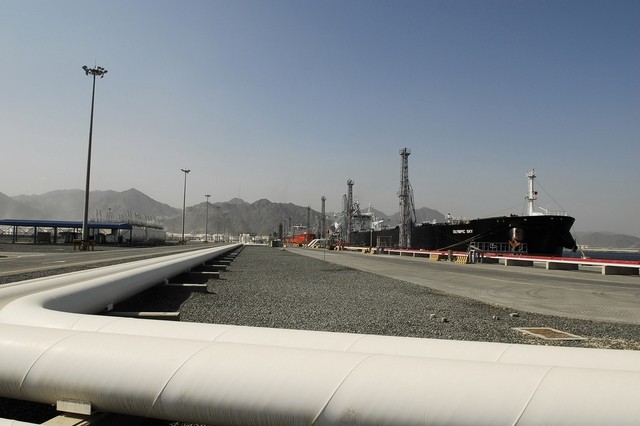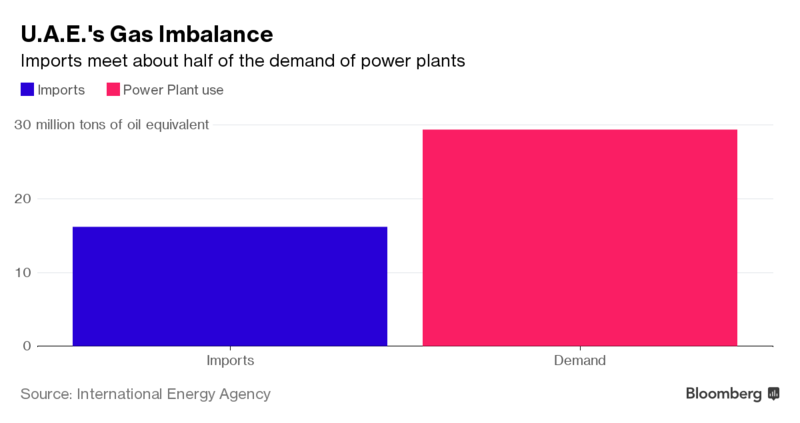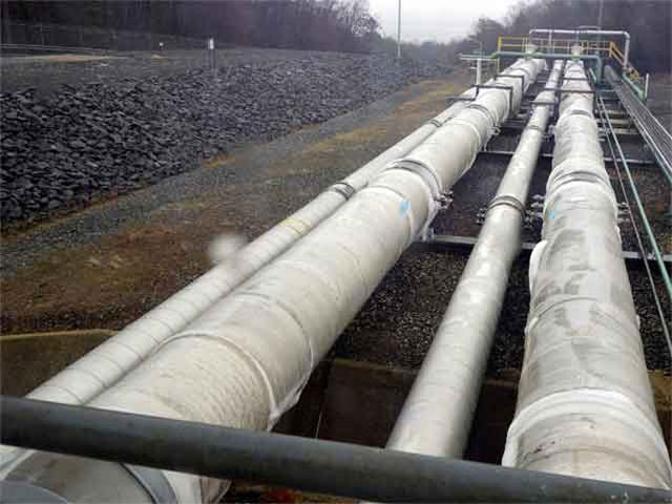When it comes to natural gas shipments, the United Arab Emirates needs Qatar more than Qatar needs the U.A.E.
The U.A.E. joined Saudi Arabia in cutting off air, sea and land links with Qatar on Monday, accusing the gas-rich sheikhdom of supporting extremist groups. But the U.A.E., which depends on imported gas to generate half its electricity, avoided shutting down the pipeline supplying it from Qatar, which has the world’s third-largest gas deposits. Without this energy artery, Dubai’s glittering skyscrapers would go dark for lack of power unless the emirate could replace Qatari fuel with more expensive liquefied natural gas.
What’s the situation for Qatari gas shipments to the U.A.E.?
Qatari natural gas continues to flow normally to both the U.A.E. and Oman through a pipeline, with no indication that supplies will be cut, according to a person with knowledge of the matter who asked not to be identified because the information isn’t public. Abu Dhabi-based Dolphin Energy Ltd., which operates the gas pipeline, declined to comment.
Who are the players behind Qatar’s gas link with the U.A.E.?
Qatar, which has the world’s third-largest gas deposits, sends about 2 billion cubic feet of the fuel a day through a 364-kilometer (226-mile) undersea pipeline. Dolphin Energy, the link’s operator, is a joint venture between Mubadala Investment Co., which holds a 51 percent stake, and Occidental Petroleum Corp. and Total SA, each with a 24.5 percent share. Since 2007, the venture has been processing gas from Qatar’s North field and transporting it to the Taweelah terminal in Abu Dhabi, according to Mubadala’s website. Dolphin also distributes gas in Oman.
What’s the extent of the U.A.E. ban on shipping with Qatar?
The U.A.E.’s oil ports authority on Wednesday night again restricted international vessels from traveling to and from Qatar, along with Qatar-flagged ships, from entering its harbors. Earlier in the day, Abu Dhabi’s Petroleum Ports Authority had lifted restrictions on international tankers.
The oil tanker Apollo Dream, which can carry about 2 million barrels of crude a day, loaded at an offshore terminal in Abu Dhabi on Wednesday after being at an offshore terminal in Qatar on Tuesday, according to tanker tracking data on Bloomberg. The vessel is currently anchored outside Saudi Arabia’s Ras Tanura port.
Other U.A.E. ports, including Jebel Ali, the region’s biggest container terminal, and the oil-trading hub at Fujairah are prohibiting all vessels traveling to or coming from Qatar.



